-
Another round of circuits and David Horvitz
We had a short check in with Tega this morning and then we got some studio time before Taeyoon’s class. I spent pretty much all of my studio time doing the readings for the CTOT class tomorrow, they were quite long this week but definitely interesting.
Taeyoon continued teaching us some more circuits stuff after lunch. We learned how to make an XOR logic gate, and then how to use an integrated circuit chip that was full of nand gates and looked like this:
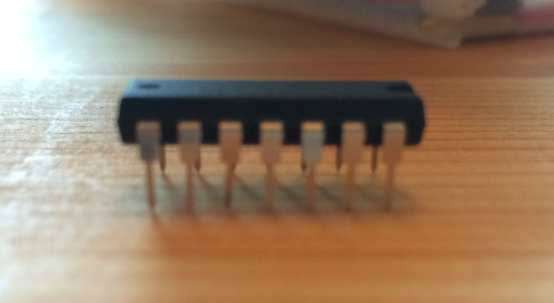
This chip lets you use nand gates to create a half adder! This means that you can add very simple binary numbers:
0 + 0 = 0 is 0 + 0 = 00
0 + 1 = 0 is 0 + 1 = 01
1 + 0 = 1 is 1 + 0 = 01
1 + 1 = 10 is 1 + 1 = 10We can see that the least significant digit resembles the output for an XOR gate and the second (or leftmost digit) resembles the output for an AND gate. By combining these two logic gates, we can create a half adder that looks like this:
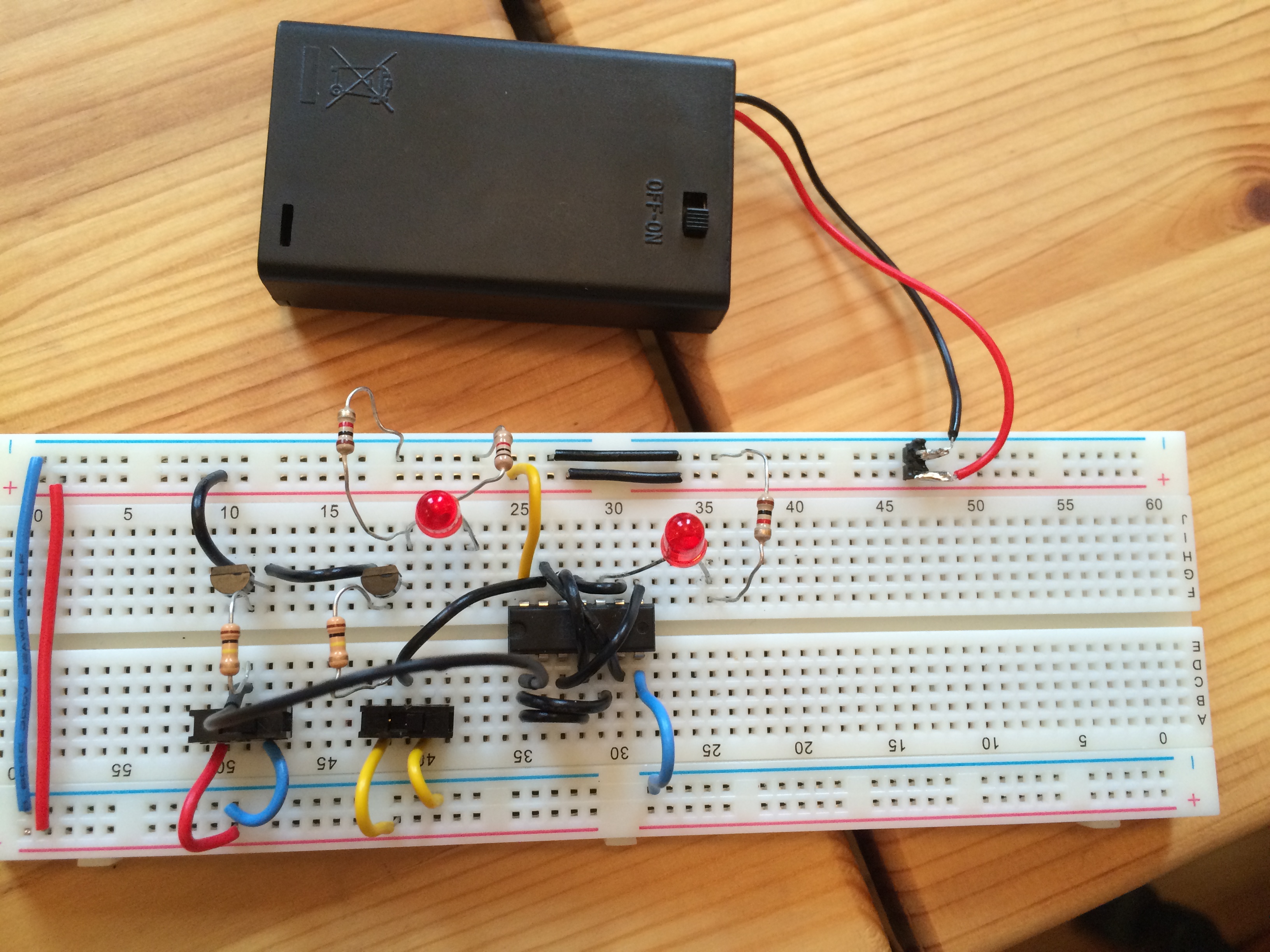
We also spent some time creating AND, OR, NOR, and XOR gates using only the chip with NANDS:
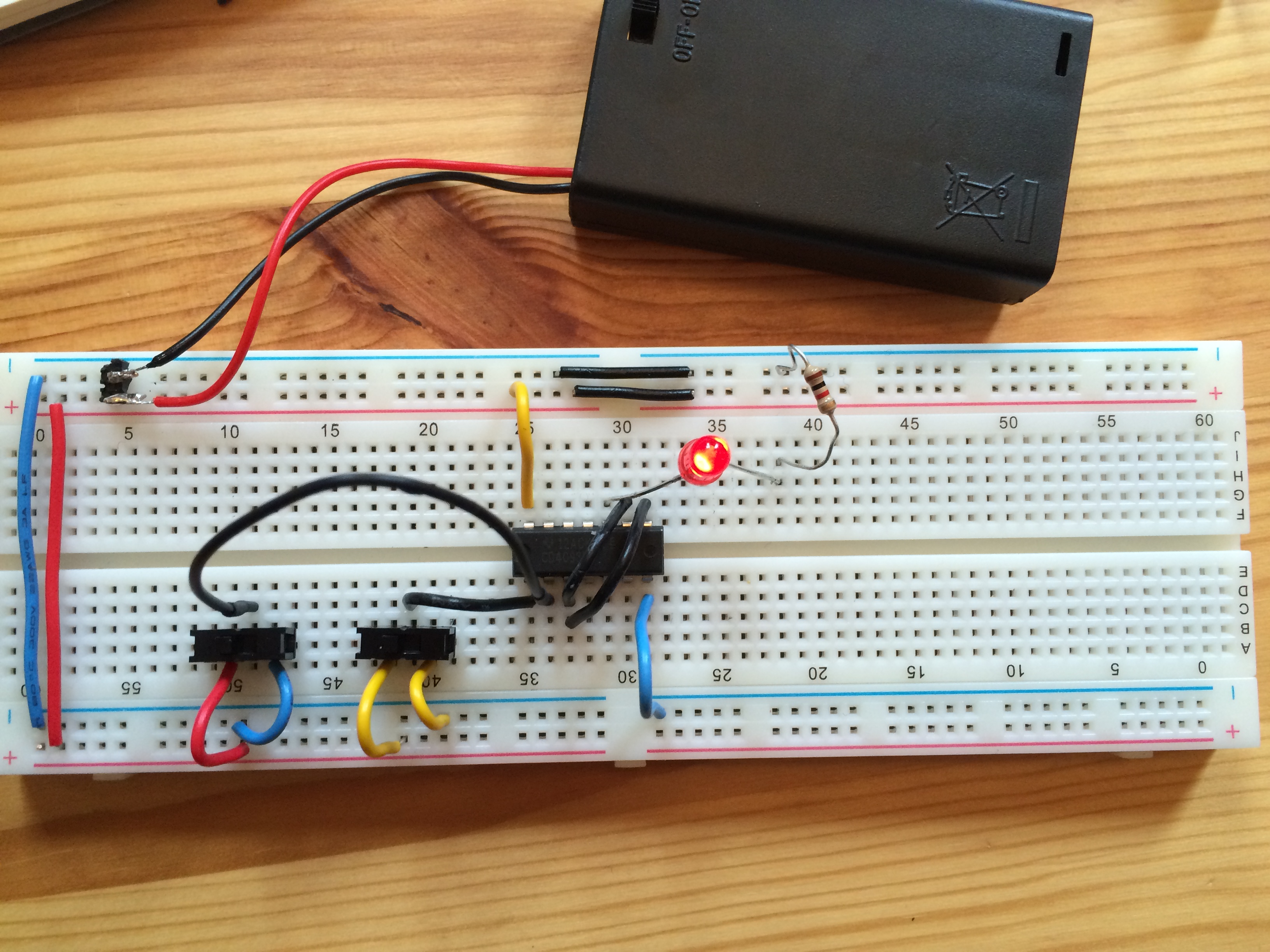
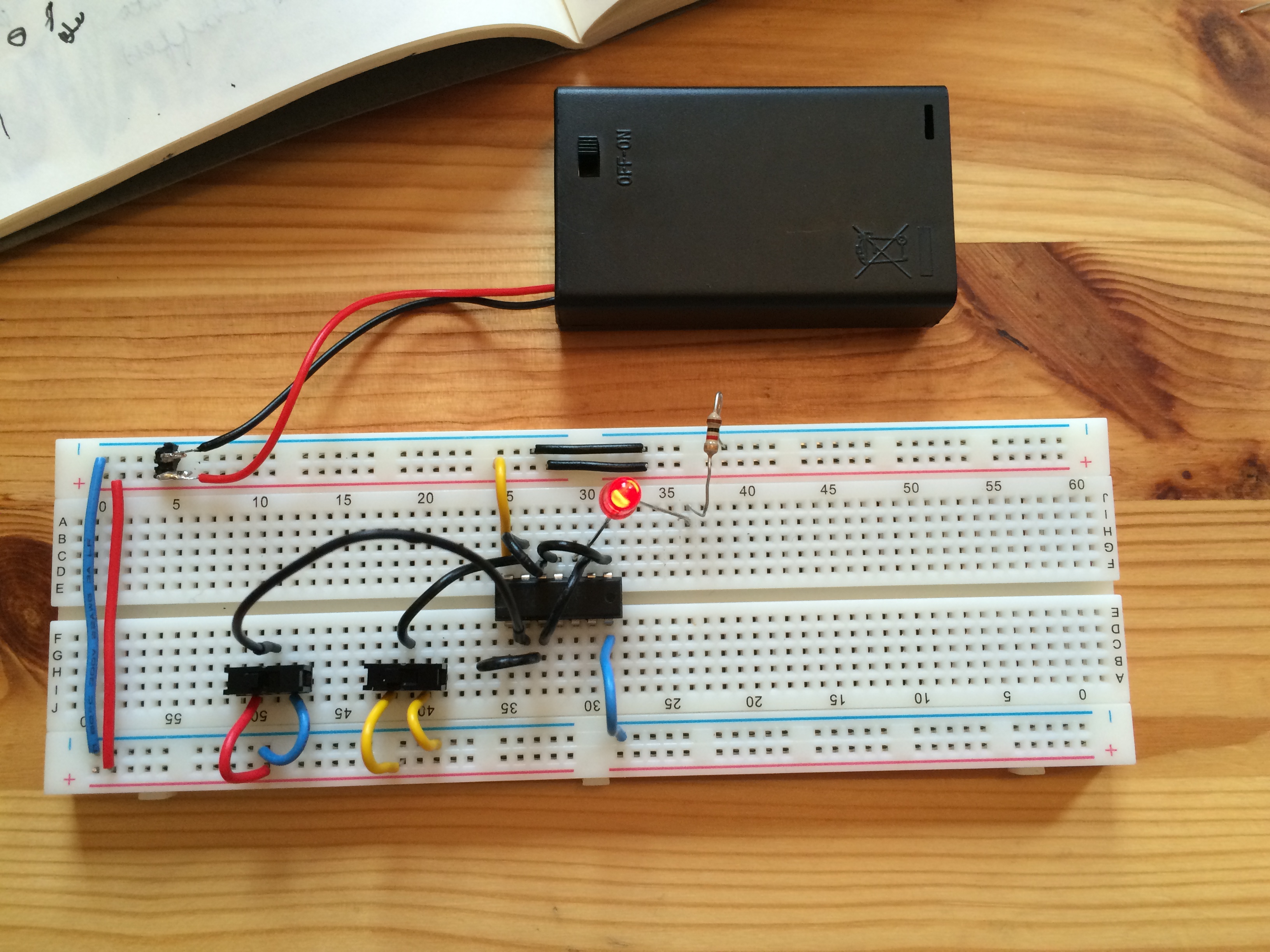
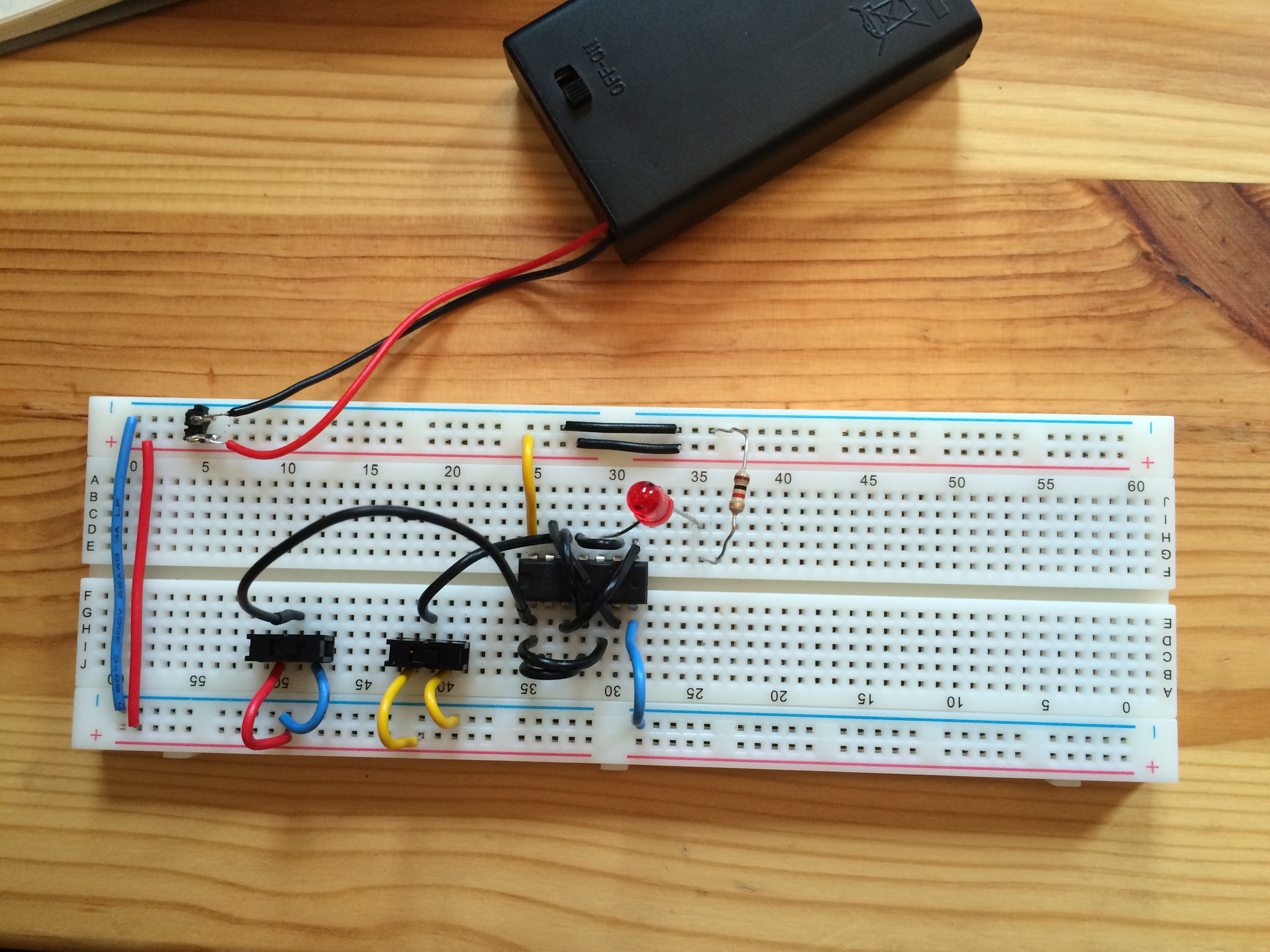
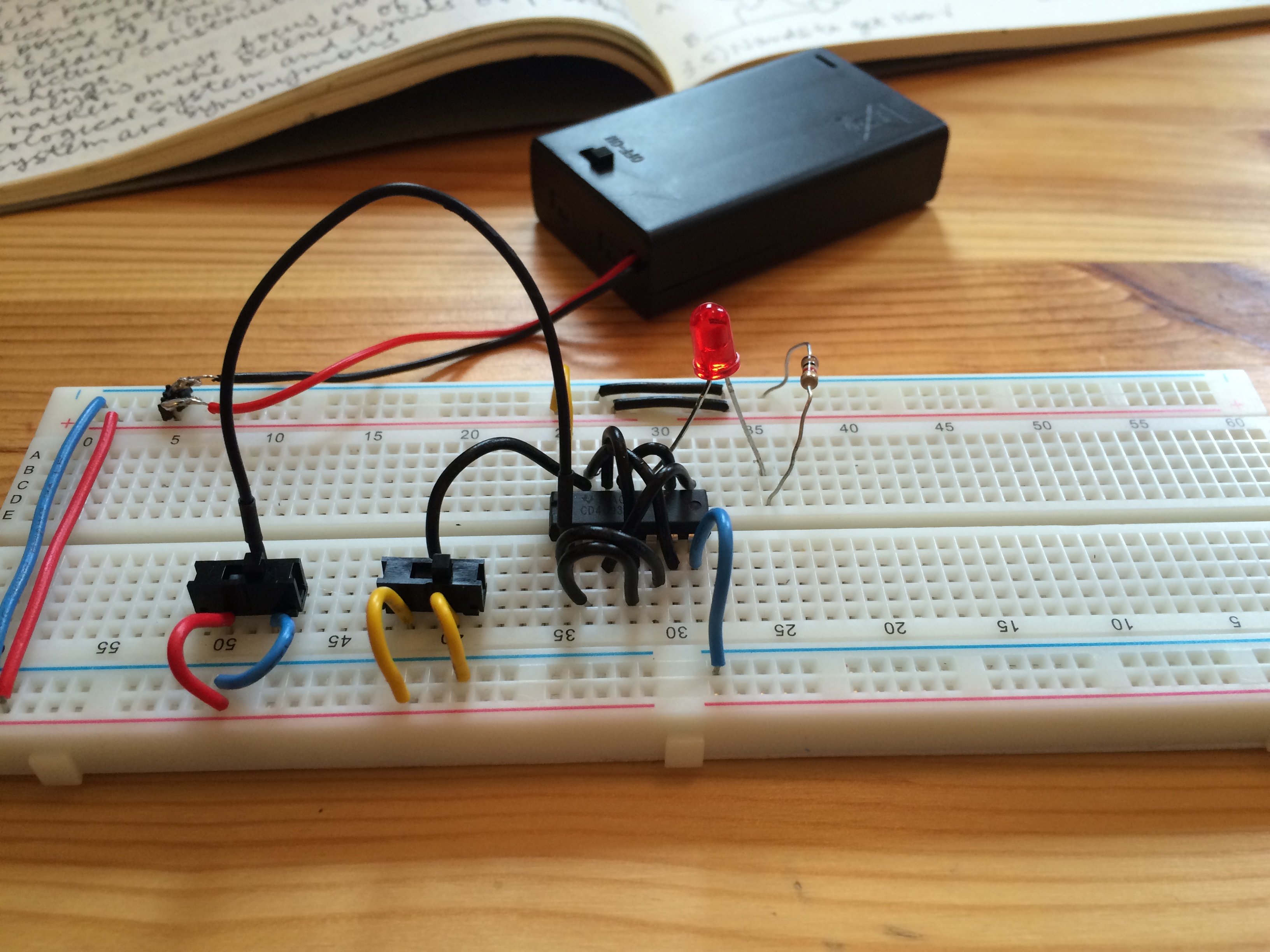
After circuits class, David Horvitz came to speak for an artist talk. He’s a super chill guy and his work is very playful. I think my favorite piece he talked about was called ‘Public Access’. ‘Public Access’ included taking a road trip up the west coast and taking a picture of himself at all of the public access beaches. He took the photo so that only his back is showing. When he was done with the road trip, he went to the wikipedia pages for each location he visited and inserted the picture he took on the beach of himself into the article. Eventually Wikipedia found out what he was doing and ended up banning him from Wikipedia. He also focuses a lot of his work on the concept of time. One example is a project in which he sailed to the line where the pacific time zone ends and took water from the time zone border. He then recreated the time zone border in a few galleries. Overall, pretty interesting and hilarious stuff!
We then ended the day with a family dinner. Franc cooked some spanish omelettes for everyone which were AMAZING. We then had a little mini surprise celebration for his birthday coming up! Happy Birthday Franc!!!!
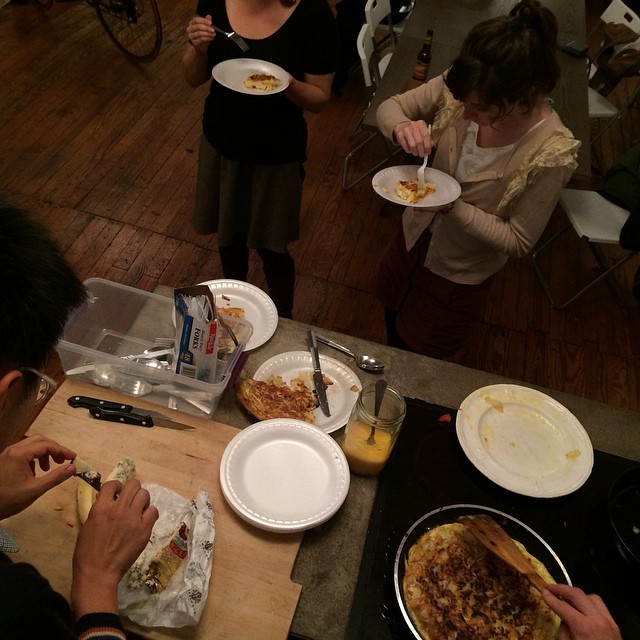
-
Final blog updates and Puzzlescript
Today was another studio day, and a very productive one! I worked on writing/consolidating a lot of blog posts. This blog is finally in a presentable state! Now I can just worry about customizing and writing one post a day! I spent a good part of the day documenting all of my ideas on a personal hackpad. It felt really good to get all of my thoughts consolidated in one place where I can get some feedback.
After lunch, Sarah led a terminal workshop which was pretty helpful. I definitely learned a few small tricks that I didn’t know before!
I spent the rest of the day working with Puzzlescript! Here is my creation!
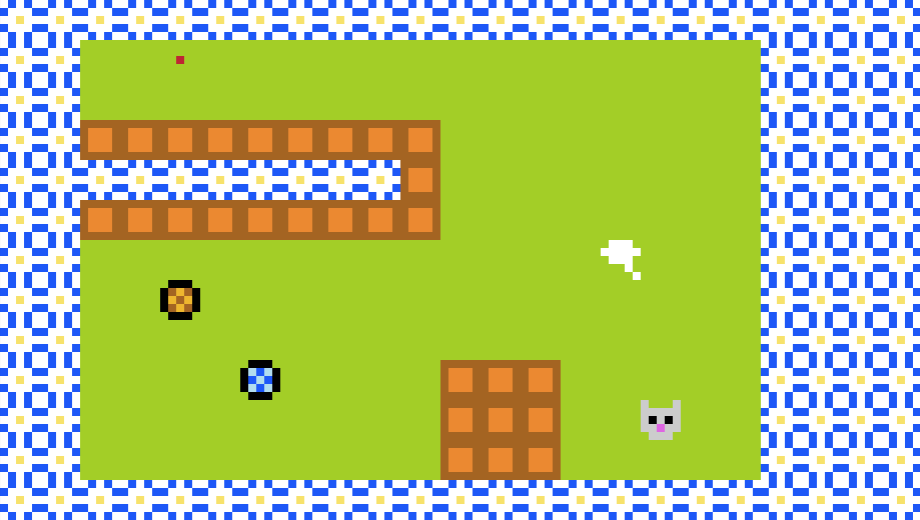
-
Animation and Caitlin Morris
Zach started the day with diving into the basics of animation. His main takeaway was that ‘We LOVE <3 numbers between 0 and 1!’. We can use linear interpolation to get between two points: A and B.
Formula:(1 - percentage) * A + percentage * B
You can raise percentages to a power which creates nonlinear movement and you can use [0-1] to mix things together. It becomes powerful for the concept of smoothing as well: Take some percentage of where you are and some percentage of where you want to go. Differnet percent ratios will decide how long your movement takes. When you have noisy data, this formula helps you ‘catch up’ to the data. Ex) If A is your noisy data, you can take some percentage of it and add it to some percentage of B, the place where you want to go. The percentage ratios indicate how fast you ‘catch up’ with the data….SO COOL!!!!We then had a lunch talk with Caitlin Morris. She just finished a residency at Fabrica in Italy. She focuses on technology as the means of an experience: technology that drives the experience rather than interfacing with technology directly. She gave us a very summary of her work at Fabrica as well as her path to where she is now. She was just so sweet and relatable and made me feel like I could one day be doing something similar.
After this, Jonas let a workshop on node.js and showed us a bunch of cool modules to use with it. Node.js is a chrome javascript engine that is taken out of the browser and put on the command line. It seems like a pretty powerful tool that may be able to replace python for me while helping me get more familiar with the web development.
I worked on circuits homework after this, and with a little bit of help from Taeyoon, I was able to create a buffer, not, and, or, nand, nor gates! I’m pretty sure I understand everything that’s going on as well! Unfortunately, there was one casualty in the process: goodbye mr. transistor…
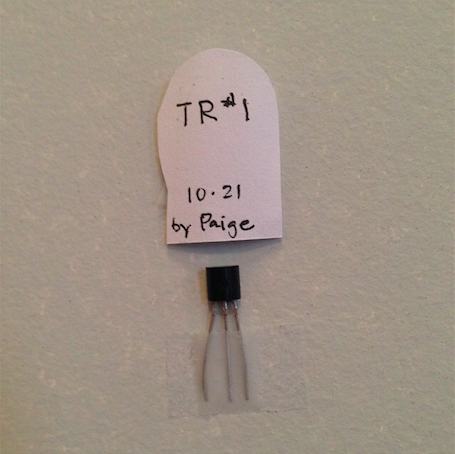
We ended the night with an SFPC family pizza dinner!
-
Zach is back!
Today was Zach’s first day back teaching after getting back from a project in Amsterdam. I was really excited for him to come back as I really want to learn some open frameworks from him. He started with check in where we talked with him about what we want to learn and what he feels comfortable teaching.
We then continued to go over some more of plt.js with Ramsey. We’re going to be writing out own languages really soon! One idea I already have is the concept of adding words, based on some linguistic concept - maybe sentiment? Adding two words will give you another with a sentiment value that equals the addition of the sentiment values for the two words. All mathematical operations could apply. Maybe you can have keywords for what kind of sentiment results you would want: objective vs subjective or positive vs negative. Andrew also showed us his game that he made with puzzlescript that was pretty hilarious: Fuck it. I really want to make one that has to do with cats…we’ll see.
Zach started his intro to open frameworks at the end of the day. We went over it’s story, philosophy, and basic usage which served as intro to his class on animation!
-
'What was the vision?' Reading Reflections [CTOT]
This is my first reading reflection post for my Critical Theory of Technology [CTOT] class. The reading that provoked the most thought for me this week was Mindstorms by Seymour Papert. (maybe also because it was the longest…)
‘It’s about using computers to to challenge current beliefs about who can understand what and at what age.’
- I do feel like I underestimate children’s ability to work with computers. Before this class, I was visiting some relatives at their cottage in northern Michigan and my younger cousin was playing Minecraft, and was insanely good at it (in my opinion). I was so amazed at what she could do in the game being so young (ages 4-7ish). Because I didn’t grow up having access to a computer at that age, it seems inconceivable that children that young can work with it so well.
I really liked the analogy of learning to communicate with a computer to being exposed to and learning a language in another country. I’ve always wondered why it’s so much easier to learn a language through exposure rather than brute force teaching so it’s really interesting to relate learning a programming language to this. I also never really thought of learning programming in the same context as learning another language such as Spanish or French; maybe because programming isn’t usually spoken, only written?
‘Breaking a vicious learning cycle without creating a dependence on machines’
- is very important. It’s great to teach children to communicate with a computer at a young age, but it shouldn’t replace any physical hands-on learning.
‘Our culture has a general perception of mathematics as inaccessible.’
- I happened to really enjoy learning what the paper calls ‘school math’, but I knew plenty of people who had mathphobia as well. There was/is definitely a clear disconnect between skills: those who feel more comfortable in the ‘english/lit/creative’ world and those who feel more comfortable in the ‘analytical/math’ world, and they’re looked at as mutually exclusive spaces. I was lucky to somehow feel inspired by and have a natural affinity for math, but at the same time, I would say I had a writing phobia because of it. Because I was good at math throughout school, I automatically felt that I would not be a good writer and hated writing and literature classes. (Which is strange because I love to read and reflect on reading…) I think this inspires my gravitation towards computational linguistics as it makes language/writing as math-y as possible.
‘Mathematics must be continuous with well established personal knowledge from which it can inherit a sense of warmth and value as well as cognitive competence.’
- I’ve been thinking a lot about why I like math since reading this paper, and I don’t know if I can articulate why yet…I was taught what the paper calls ‘school math’ and I don’t feel like I had much of a chance or was encouraged to find relevance to something personal, as the author did with gears. In college, what distinguished math from other classes for me was that it was learning and understanding a process rather then memorizing facts. So why do I like math enough to get a degree in it? I don’t quite know.
Check out all the readings:
Mindstorms: Seymour Papert
Face to Face: Alan Kay Still Waiting for the Revolution: an interview with Alan Kay
Bicycles for the mind: Steve Jobs